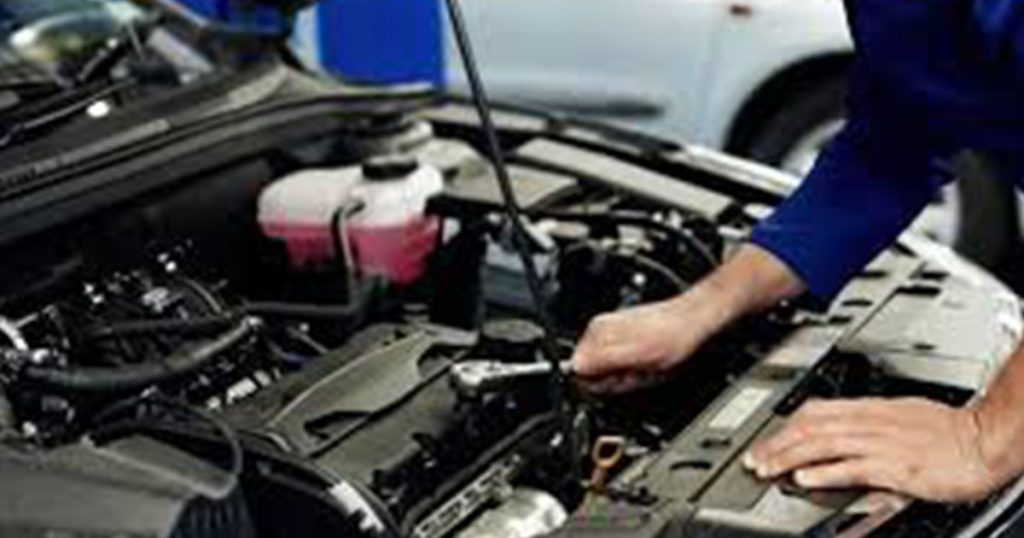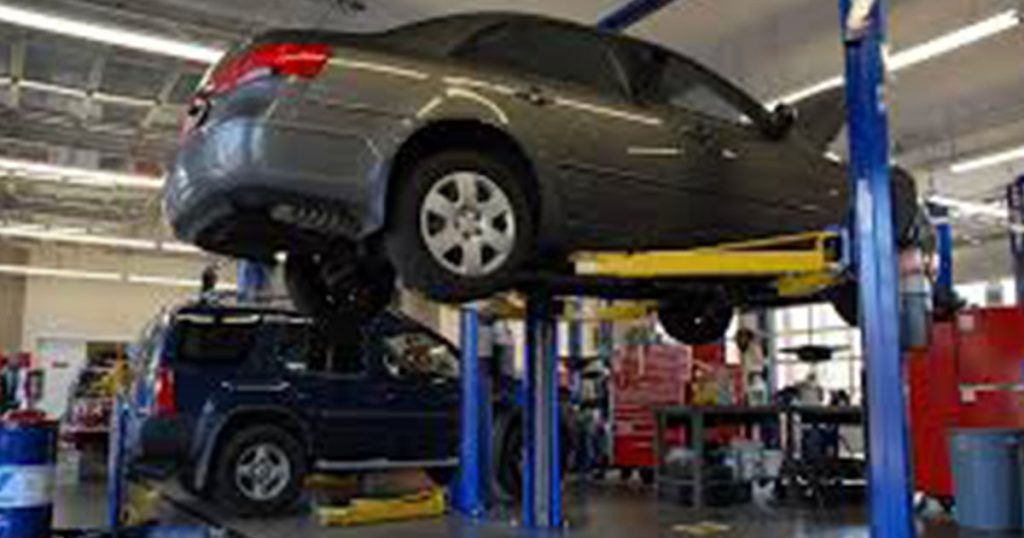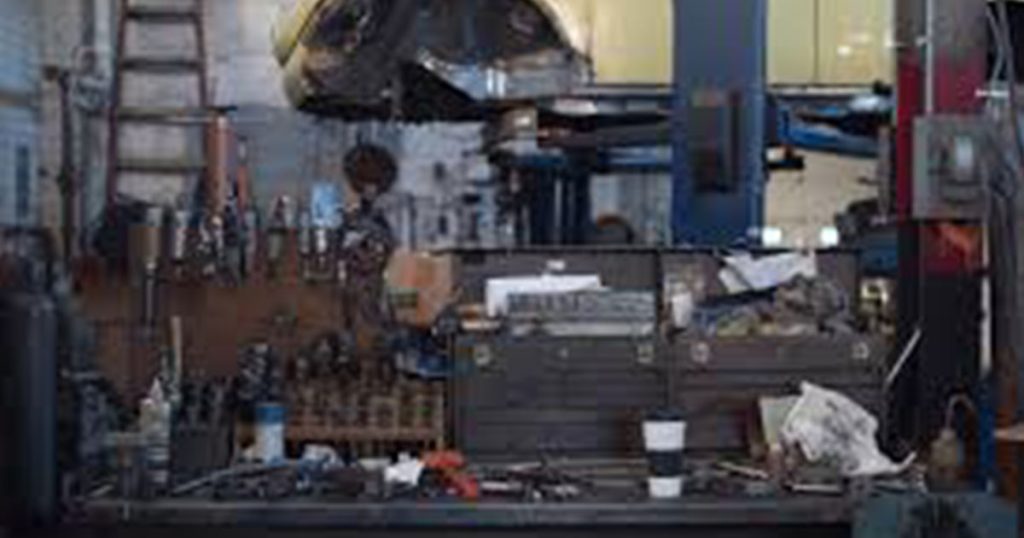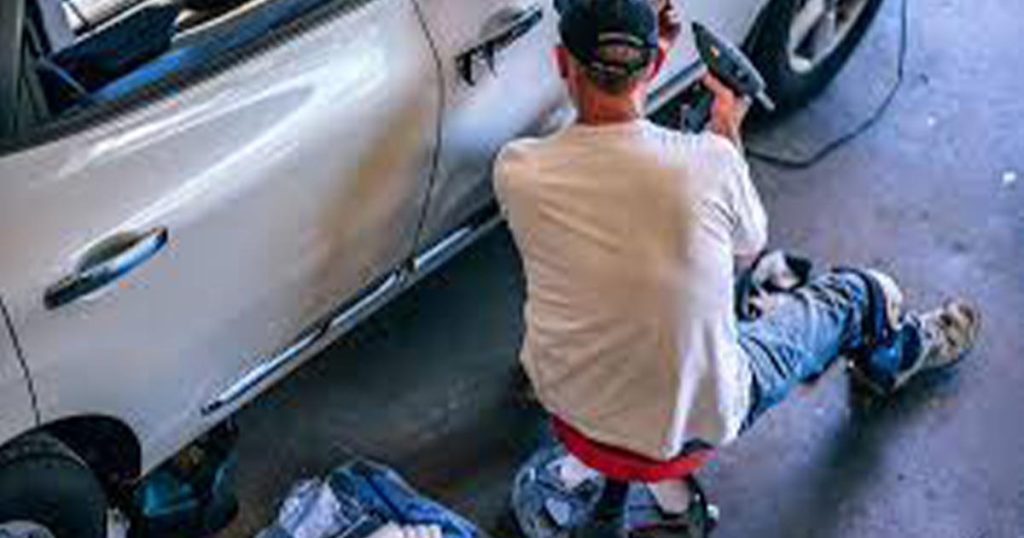Hybrid Car Maintenance Made Easy: A Step-by-Step Guide-2025:- Hybrid vehicles come on like bullet trains in the markets with highly fuel-efficient and eco-friendly designs.
Hybrids share an electric motor with an internal combustion engine, resulting in a bright middle-ground of better fuel economy and reduced emissions. However, maintaining a hybrid is night and day compared to a gas vehicle.
But whatever option you choose, understanding the nuances of both power sources is essential to give you the best performance over time. Unlike regular cars, hybrids depend on complex battery systems, regenerative braking, and complex electrical parts.
This means that those systems need to be inspected regularly and maintained before incurring expensive repairs in the future. A properly cared-for hybrid not only drives smoothly but can also go a good while when it comes to holding its value.
Some appropriate upkeep involves inspecting battery wellness, the hybrid cooling system, and the internal combustion motor and transmission fluid degree. Of course, anyone who owns a hybrid should be aware of the potential for seasonal temperatures; extreme highs and lows can affect battery function.
Another key thing to do is to ensure the vehicle software and firmware are updated; updates are often released by manufacturers to improve vehicle efficiency and reliability. Catching minor problems early stops major mechanical failures and keeps the car operating at its best.
If hybrid car owners follow a systematic way of maintenance, Shoddy fuel consumption (using power), battery age enhancement, and a smooth driving experience will be routine. Spending money on regular maintenance now saves you money and keeps you on the road in a hybrid with years of perfect service.
Understanding How a Hybrid Car Works

A hybrid vehicle is a vehicle that combines an ICE (Internal Combustion Engine) with an electric motor and a high-voltage battery to drive the vehicle. These two systems of power allow hybrids to have an incredible fuel economy coupled with lower polluting emissions. Hybrids use regenerative braking, unlike conventional vehicles. Known as regenerative braking, this technology captures kinetic energy and turns it into electrical energy that recharges the battery, increasing overall efficiency and reducing wear on conventional braking components.
Since hybrids use both gasoline and electricity, both systems must be well-maintained to stay reliable for the long haul. Even the high-voltage battery needs to be exercised from time to time to avoid capacity loss. The internal combustion engine will still need oil changes and visits to tend to the cooling system every so often. Also, the inverter system — which basically controls how power flows between the battery and the electric motor — has to be kept in top shape.
Ignoring the hybrid-specialized elements, though, could lead to lost efficiency, decreased range, and costly repairs. Routine inspections, firmware updates and fluid replacements help your hybrid system operate more efficiently. At the same time, owner-operators of a hybrid are getting the most out of every dollar spent, as keeping the two main functioning components of a hybrid—the electrical system and the mechanical components of a vehicle—running gives the vehicle many more years of seamless and competent efficiency while serving to maximize the life of the battery.
The Importance of Regular Maintenance
Regular maintenance is crucial for ensuring the efficiency and longevity of a hybrid car. Hybrids rely on an intricate network of software, electronic components, and mechanical systems than traditional vehicles.
A constant check will also make sure the internal combustion motor and the electric motor are running well, before and with no unpleasant breakdown plus expensive repairs. Among them, battery health is one of the most vital parts of hybrid maintenance.
Maintaining the high-voltage battery ensures that fuel economy stays at the peak and prolongs battery life. Furthermore, software updates distributed by manufacturers can also enhance vehicle behavior, improve energy management, and resolve potential problems before they get serious.
Regular maintenance of the inverter, cooling system, and braking parts improves overall reliability. If these minor issues are ignored, they can turn into a costly repair bill and a loss of efficiency over time. With regular upkeep, hybrid drivers can count on flawless operation, lower emissions, and savings on gasoline and repairs that last for years.
Checking and Maintaining the Hybrid Battery
The hybrid battery serves as the heart of the vehicle’s electric system, providing energy to the electric motor and collaborating with the internal combustion engine.
The upfront cost of a new battery might be offset later in life when the battery fails and shows signs like poor fuel economy, inconsistent charging, or warning lights on your dashboard. Failing to heed these warning signs will result in decreased performance and expensive repairs.
When batteries are deep in debt, they discharge good stuff, and if this goes on for a long time, they start killing battery cells/battery cycle. Keeping an ideal temperature is just as important; excessive heat or cold can affect both efficiency and lifespan. To help prevent overheating of the battery, you can find shade during the hot climate and through the thermal management system.
Battery reconditioning can, in some cases, provide lost capacity and performance, and replacements are always allowing time. Routine diagnostics and preventive maintenance keep the battery in working order, allowing the hybrid system to operate for years.
Engine Maintenance: Keeping the Internal Combustion Engine Efficient

When a hybrid rides on electric power for most of the time, the gasoline engine can fade from consideration. However, it is still an essential part of car servicing due to the gas engine.
Doing so requires regular oil changes in order to keep the engine lubricated and free of carbon. Follow the required intervals specified by the site in order to ensure that the vehicle lasts long while performing at its best.
Coolant levels are also going to be something to keep an eye on—if things get too hot, it can be game over for the engine and hybrid system. A sound cooling system reduces wear and protects critical engine components from heat damage.
Replacing the spark plugs at these intervals also helps you burn your fuel more thoroughly, which will undoubtedly help cut down on emissions and maintain the fuel economy. By switching commute modes often between electric and gas, hybrid engines are often used, allowing them to be used intermittently.
This may lead to a peculiar pattern of wear that can make routine maintenance way more critical in its own right. Unless the hybrid owner neglects the occasional oil change, coolant maintenance, or the odd spark plug, the surprisingly reliable internal combustion engine can keep the wheels rolling for decades.
Brake System Maintenance: Understanding Regenerative Braking
Regenerative braking turns kinetic energy into electrical energy, limiting the wear of traditional brake components. So, that process not only boosts efficiency but also helps in increasing the lifespan of the brake pads. Nonetheless, regular inspection is obligatory as long as the entire braking system works appropriately.
Although hybrid brake pads are designed for longer service life than conventional vehicles, rotors can still wear or develop rust from reduced friction-based braking. Weak or contaminated brake fluid can affect brake performance, so we need to monitor brake fluid as well.
A regenerative braking system feels less powerful, is slow to kick in, or a dashboard symbol comes on, then consider that an indicator of the fact that there are deeper, more problematic issues that may need a professional diagnosis.
By pre-empting these concerns, you will have a smooth and responsive braking system that not only serves to protect your safety but will also enhance the enjoyment of your outside driving experience.
Monitoring the Hybrid Cooling System

In hybrids, mainly due to heat being generated from not just the internal combustion engine but the high-voltage electrical components as well, a cooling system is crucial for long-term reliability.
Overheating will obviously degrade the performance, then damage the battery, and later, expensive repairs will be necessary! Check coolant levels, reservoirs and hoses for leaks or blockage to make sure everything stays nice and cool.
Inverter Cooling System – The cooling system keeps the critical electrical components in check, including the inverter, so this is also a vital check-up spot to be inspected regularly.
A failure to heed the cooling system can put hybrid components under thermal stress, reduce efficiency, and shorten their lifespan. It also prevents overheating issues and enables the car to function under all conditions.
Transmission and drive Train Care
However, hybrid transmissions typically work much differently from ordinary automatic transmissions, which are usually coordinated using either a continuously variable transmission (or CVT) controlled electronically or a dual-clutch. Exotic transmissions: These newfangled advancements need some special fluid to operate correctly and prevent tearing up seals.
At the same time, this is a reason to replace transmission fluid at manufacturer-specified intervals — burned or broken-down fluid provides extra resistance, resulting in overheating and lower efficiency.
Transmission problems can include slipping gears, rough shifting, delayed acceleration, or strange noises. The failure to heed this bell ringing can lead to a costly chain reaction or total transmission failure.
Fluid checks and servicing on a regular ensure efficiency is up to snuff and maximize the flow of energy from a gasoline engine to an electric motor (and vice versa). Preventative maintenance also adds years to transmission life and improves overall vehicle reliability.
Keeping an Eye on the Inverter System
Although the power inverter for the hybrid vehicle is one of the essential components, in other words, it is a power converter to transact the electricity between the high-voltage battery and the electric motor. This allows for seamless transitions between power sources to improve efficiency and performance.
In case of an inverter failure, the vehicle can also cut off power instantly, accelerate and lose control intermittently, or the dashboard will light up warnings. One among them is Excess Core Temperature (hot). An inverter generally fails because of overheating, and keeping its cooling system in good condition is essential.
Overheating can be kept under control by routinely checking for good coolant levels and making sure air is flowing freely around the inverter. However, suppose the warning lights or the vehicle’s performance seems to be out of the ordinary. In that case, they should be fixed as soon as possible to avoid expensive repairs in the long run and make sure the hybrid system is in its usual gear.
Tire Maintenance for Optimal Performance
Well-inflated tires can help by minimizing rolling resistance, the single most significant factor affecting fuel economy. Tires that are low on air create unnecessary friction and increase wear from being under-inflated. In contrast, an over-inflated tire will wear in the center of the tread and can quickly lose traction, making an uncomfortable ride.
And with proper tire rotations and alignments, they’ll wear evenly, last longer, and provide the best handling available. Misalignment of wheels may lead to high tire wear and negatively affect drivability.
If you want even greater fuel economy, target low-rolling-resistance tires designed for hybrids to maximize your mileage and efficiency. An enhanced fuel utopia of the automobile is another result of regular tire service, which, in turn, provides a comfy and safer ride.
Hybrid-Specific Filters: Cabin and Engine Air Filters
The vehicle’s performance and the ambient air can only be at their best when the filters are clean. Cabin air filter: Prevents dust, pollen and pollutants from reaching inside the vehicle through the airflow system.
As time goes on, a blocked filter can make running the ventilation system less efficient and can also release foul smells. Regularly replacing it improves passenger comfort and air circulation. Importance of Engine Air Filter The engine air filter is as vital as the oil filter since it prevents any impurities from entering the combustion chamber.
The filter can get dirty and limit the amount of air entering the engine, which can interfere with proper fuel combustion and reduce engine power. Performing regular inspections and timely replacements brings better fuel economy, improved engine longevity, and a seamless driving experience.
Monitoring the Auxiliary 12V Battery
Advanced high-voltage battery systems may be part of hybrid vehicles. Nonetheless, they still rely on a conventional 12V battery for basic tasks like powering all the extras, electronic systems, and cranking the engine.
A car with a weak or failed auxiliary battery would lead to various problems in the system, such as warning lights on the dashboard or even the car not starting. To catch it in the long run, always check the battery voltage.
High temperatures and low usage are two considerations that can reduce battery lifetime. To have the electrical systems of the vehicle running smoothly, it is essential to have routine maintenance, which includes changing the 12V battery every few years to avoid unforeseen failures.
Software and Firmware Updates
Sophisticated software in hybrids manages the energy distribution while balancing the fuel economy and behavior strain between the two power sources, the combustion engine and the electric motor. This advanced setup even monitors it and adjusts performance on the fly to keep things running smoothly.
Now, firmware updates are a lot of the time, an invisible process manufacturers are constantly putting out to oil the gears of things that make sure battery management, among other things, is at their best and that any bugs are squelched.
It could also optimize regenerative braking, sharpen power delivery, or introduce other efficiency technologies. By checking for and downloading software updates as recommended by the manufacturer, your vehicle will always be running as up-to-date as possible, allowing you to get the most out of your car in terms of performance, reliability or just general driving experience.
Checking Warning Lights and Diagnostic Codes
Modern hybrids come equipped with advanced diagnostics that track key components and systems for failure. These systems can identify problems and notify drivers of a warning light on the dashboard, avoiding minor problems turning into significant component failures.
It even helps to decipher what those warning lights mean, like battery, engine, or braking system—all things that require immediate attention. A lit check engine light or hybrid system warning should not be ignored; it ranges from trivial sensor failures to serious drive train problems.
An OBD-II scanner will tell you more about the fault code and help in diagnosing the issue well before it gets worse. Quick response to warning signs is the way to keep the hybrid system reliable, avoiding expensive repairs and unpredictable breakdowns.
Seasonal Maintenance Tips for Hybrids
The extreme temperature performance of hybrid vehicles calls for seasonal changes to temperature efficiency. Cold weather reduces battery capacity and increases energy consumption, especially in winter. Battery pre-conditioning—bringing it up to temp while plugged in—optimizes efficiency and range. Storing the vehicle in a garage or using an insulated cover helps to protect battery health even more.
Battery life can be harmed by excessive heat, or it can put pressure on cooling systems in summertime. Avoid Heating — Park It In the Shadow, Use Reflective Windshield Covers and Proper Ventilation. Real-time status of coolant levels and inverter temperature is essential so that their performance is not reduced.
Seasonal shifts–To keep the hybrid system running smoothly all year round, adapt maintenance routines to seasonal conditions, ensuring battery life and efficiency are preserved.
Fuel System Care for Hybrid Vehicles

Gasoline can stay in the tank for extended periods because hybrid vehicles use electric power for a lot of their driving. Stale gas can break down after a while, causing varnish deposits and gumming up fuel lines and injectors.
If you drive the car infrequently, you can use a good fuel stabilizer to keep the fuel from deteriorating. And every once in a while, running the internal combustion engine helps make sure the fuel circulates appropriately and prevents deposit build-up.
This ensures that when the gasoline engine does fire up, combustion is as efficient as possible, and the fuel injectors are being cleaned at mandated intervals. Proper Fuel System Service keeps the Hybrid running strong and trouble-free.
Exterior and Interior Maintenance
Higher-order aerodynamic effects have an outsized impact on the overall efficiency of a hybrid vehicle by allowing the vehicle to reduce the energy lost to drag, which can improve efficiency.
When adequately cleaned of dirt, debris, and ice build-up, the exterior can make it easier for air to move over the vehicle, improving fuel economy and overall performance. A bit of regular washing and waxing protects the paint and goes a long way to lengthening the life of the vehicle, too.
Aside from aerodynamics, the interior is also the next big thing. Cleaning the interior, vacuuming carpets and conditioning seats to prevent wear and maintaining resale value. If the interior is tidy, driving is easier and more fun because you have fewer distractions.
With these dos and don’ts, taking care of a hybrid owner can ensure the highest level of efficiency and comfort broadly, as well as long-lasting value over the years with the exterior and interior upkeep.
DIY vs. Professional Maintenance
Some hybrid maintenance tasks can even be performed easily at home, thereby saving considerable time and money. The engine air filter, cabin filter, tire pressure checks, and tire rotations are all literally as simple as twisting this bolt, popping this tab, and boom — minimal to no tools are required.
As with most things in life, ensuring that regular maintenance is performed allows for consistent operation and a longer life cycle.
However, more sophisticated systems, like high-voltage batteries, power inverters, and transmission, require expertise and tools. These are not systems that are meant to be fixed in a DIY manner, and trying to do so can result in high damages or even safety risks.
You need a hybrid mechanic for expert diagnostics and repairs. Certified professionals are trained and equipped to service hybrid-specific components so those systems will operate at peak performance and without failure. Explore It Yourself Professional check-ups enhance at-home maintenance with fresh eyes, helping the hybrid system stay in top condition.
Long-Term Cost Savings of Proper Maintenance
Hybrids and maintenance are essential for long-term ownership costs. This kind of preventative care keeping up on oil changes, monitoring the battery, and inspecting the brake system helps catch minor repairs before they turn into significant costs.
Maintaining optimal cooling and electrical systems can avoid unforeseen, expensive component failure. A hybrid that is maintained not only operates efficiently but also gets to live a long life. As long as you regularly service the power train, battery, etc., the vehicle should continue to work reliably for a long time.
Replacing worn items also ensures optimal performance and preserves resale value. A hybrid with a service history is more likely to attract a premium from buyers, making it a more intelligent buy long-term. A stitch in time saves nine on future expenditures and yields better returns.
Conclusion
Maintaining a hybrid car is a simple process when approached in an orderly manner. A high-voltage battery check-up, internal combustion engine servicing, and assessment of vital components (brakes, tires, and cooling systems) will have the vehicle in tip-top shape.
Scheduled maintenance allows increases in efficiency and avoids expensive repairs. Regular oil changes with the correct viscosity software updates and optimal battery management will go a long way to keeping things running smoothly. Deciding early on will save the business from massive failures since minor problems are generally solved early on.
This allows hybrid owners to reap the benefits of peak fuel economy, low operating costs, and an extended vehicle lifespan by committing to consistent upkeep. Inheritance is reliable thanks to the proper maintenance of the vehicle, which makes hybrid ownership an overwhelmingly rewarding experience.
